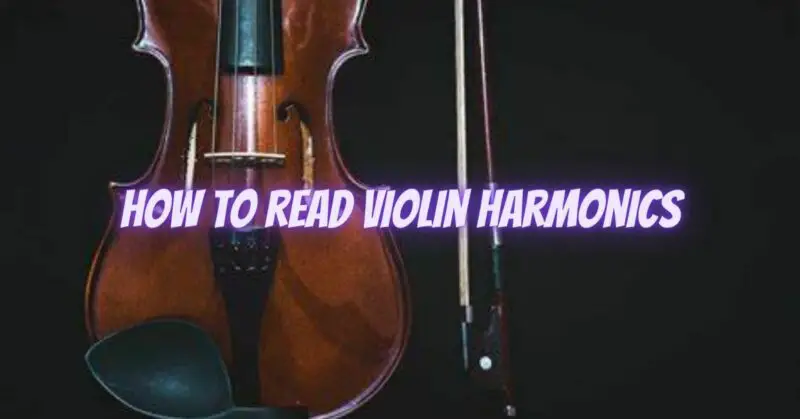Harmonics are an integral part of violin music, offering unique and ethereal sounds. Reading harmonic notation on sheet music can be initially daunting for violinists. However, with a solid understanding of the symbols and techniques involved, deciphering harmonic notation becomes more accessible. In this article, we will provide a comprehensive guide to help violinists read and interpret harmonic notation accurately.
Understanding Harmonic Notation: Harmonic notation consists of specific symbols placed above or below the staff, indicating the desired harmonic to be played. These symbols represent the fundamental pitch (stopped note) and the harmonic node, which divides the string into vibrating and stationary segments.
Common Harmonic Symbols:
- Diamond-Shaped Noteheads: The diamond-shaped noteheads placed above or below the staff indicate natural harmonics produced on the open strings. Each open string has its set of harmonic symbols, typically notated by a diamond shape at the desired pitch.
- “O” Symbol: The letter “O” placed above or below the staff indicates artificial harmonics. This symbol is followed by a number, indicating the finger placement to create the harmonic node. For example, “O7” indicates an artificial harmonic produced by stopping the string with the first finger, one octave above the indicated pitch.
- Square Brackets: Square brackets surrounding a note or chord signify the desired pitches to be played as artificial harmonics. The square brackets are typically labeled with the finger placement number inside or above them.
Reading Harmonic Notation:
- Identify the Fundamental Pitch: Locate the note on the staff that represents the fundamental pitch. This is the pitch to be stopped with the left-hand finger.
- Determine the Harmonic Symbol: Look for any symbols above or below the note. If you see a diamond-shaped notehead, it indicates a natural harmonic on the corresponding open string. If you encounter the “O” symbol, followed by a number, it signifies an artificial harmonic.
- Apply the Appropriate Technique: a. Natural Harmonics: For diamond-shaped noteheads, play the indicated open string without stopping it with your left hand. Adjust your bowing technique to achieve a clear and resonant harmonic sound. b. Artificial Harmonics: When encountering the “O” symbol, follow the finger placement indicated by the number. Place your left-hand finger lightly on the string to create the harmonic node while stopping the fundamental pitch. Use your bowing technique to draw the bow across the string at the harmonic node, producing the desired artificial harmonic.
Practice Tips:
- Understand the Harmonic Series: Familiarize yourself with the natural harmonic series on the violin. Practice producing harmonics on the open strings to develop a strong foundation in harmonic techniques.
- Experiment and Refine Technique: Explore different finger placements for artificial harmonics and practice them slowly and meticulously. Focus on achieving clear and resonant harmonic sounds. Refine your left-hand finger placement, bowing technique, and pressure to achieve optimal results.
- Study Specific Repertoire: Examine and practice harmonic passages in specific pieces of music. Analyze the notation, experiment with finger placements, and practice the passages to develop your skills in reading and performing harmonic notations within the context of a musical piece.
- Seek Guidance: Consult with a violin teacher or experienced violinist to receive personalized guidance on reading and interpreting harmonic notation. They can provide valuable insights, technique suggestions, and practice exercises to help you navigate harmonic passages effectively.
Conclusion: Reading harmonic notation on the violin is a valuable skill that allows musicians to explore the vast tonal possibilities of harmonics. By understanding the symbols used in harmonic notation, identifying the fundamental pitch, and applying the appropriate techniques for natural and artificial harmonics, youcan confidently decode and perform harmonic passages in your violin repertoire. With practice, patience, and guidance, you can master the art of reading violin harmonics and unlock the mesmerizing beauty of harmonic sounds in your music.

